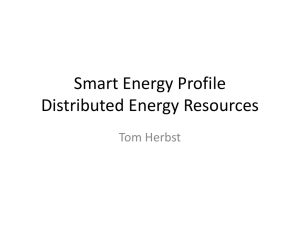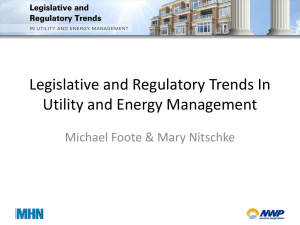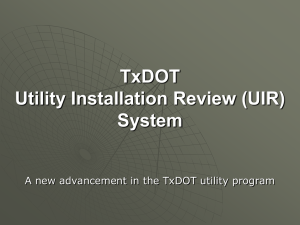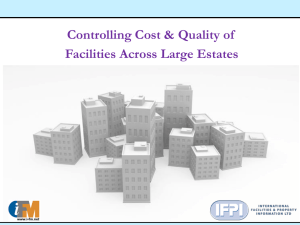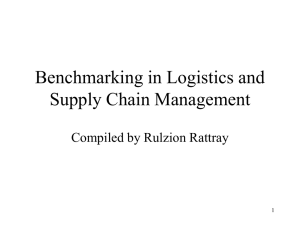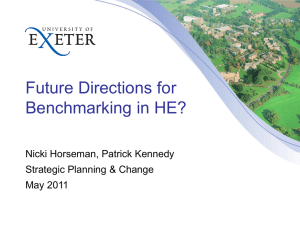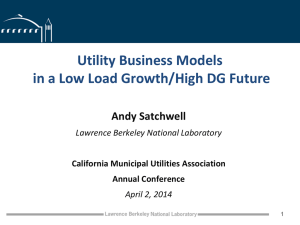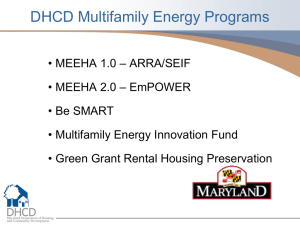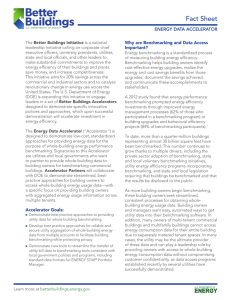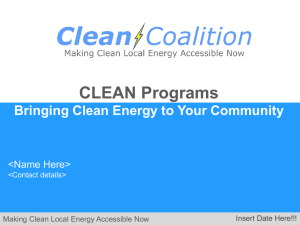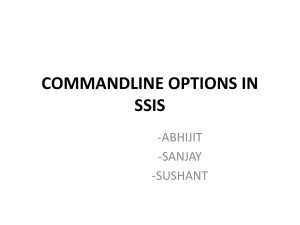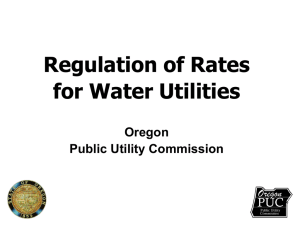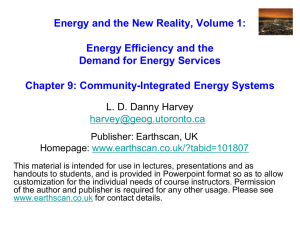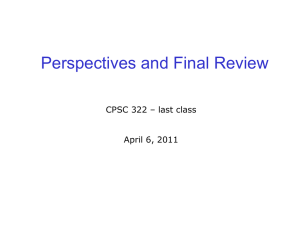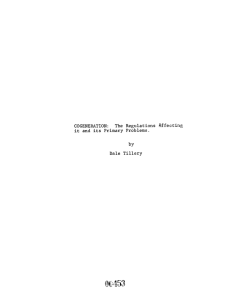Outline for Ian Bowles presentation & discussion about collaboration
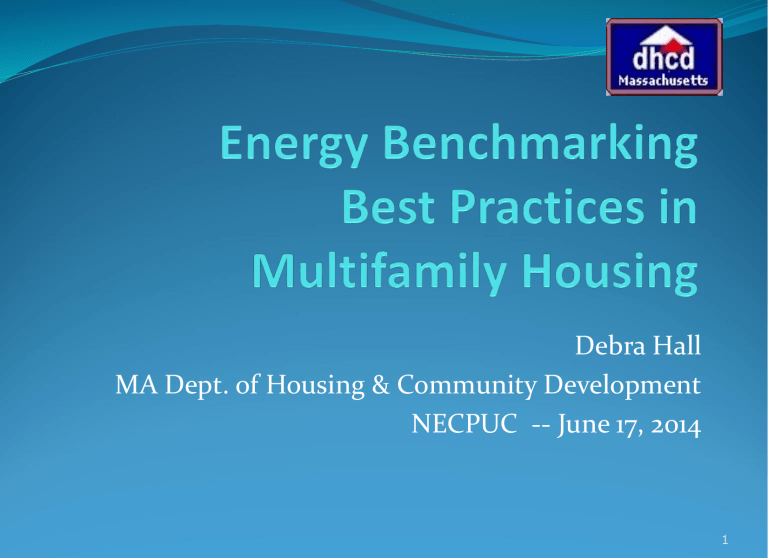
Debra Hall
MA Dept. of Housing & Community Development
NECPUC -- June 17, 2014
1
Conclusions first!
Early & deep engagement by utility program administrators with stakeholders/owners/ customers pays off
The best benchmarking tools help target resources as well as measure performance
Creating whole building data is still difficult, but is progressing
Benchmarking does not displace but should complement EM&V
2
Massachusetts State-aided
Public Housing Profile
~ 240 local housing authorities (HA)
~ 45,000 state-assisted apartments in 7000 buildings
~ 2/3 are elderly units
~ 15,000+ electric heat units
~ 75 of these HAs also also manage 35,000 federal units
FAMILY
3
Patrick Administration Green Goals
Executive Order 484 – public agencies lead by example
– energy/water savings targets
Green Communities Act 0f 2008 (& 2012)– efficiency as “first fuel” – 3-year energy efficiency plans – robust low income program
Global warming /Climate change plan – 25% by 2020
Sustainable Development Principles - Grow the
Innovation Economy & Clean Energy businesses
4
MA goals for
Sustainable Public Housing
Reduce the “footprint”, especially energy & water use,
GHG emissions (25% by 2020)
Implement innovative sustainable measures as model for broader community and citizen action
How to target the right investments and confirm the savings?
5
Performance Metrics part of Public Housing
Fiscal Data Base for ~10 years
Operating
Utility Costs ~ $90+ M
$40 M electric
$22 M gas
$25 M water
Maintenance ~ $34 M
Other Metrics:
250 M Kilowatt hours electricity
12 M therms natural gas
250K gallons heating oil
~537 M Lbs. CO2
6
Brown to Green :
Driven by Capital Planning Inventory
& $500 M Housing Bond
Policy shift from competitive to condition-based capital planning:
$40 M in heating systems
$ 28 M in roofs
$5 M low flow toilets
$ 10 M Energy Performance Contracts at large authorities
+ Millions to other building shell work
– siding, windows, doors
PLUS $ 10+ M Utility Energy Efficiency
Programs (lighting, refrigerators, insulation)
7
New boilers - What you save depends on where you start
Devs with heating replaced between 2008 and 2012
8
Green Communities Act of 2008 boosted resources for MF housing
Utilities obligated to use energy efficiency as “first fuel”
Three year energy efficiency plan - $2 billion budget
10% of budget to Low Income households/customers
Utilities held Stakeholder Charrette that led to new
Multifamily programs for Low Income and Market Rate
Low Income Multifamily Program designed with a pilot-test of a new benchmarking software called
WegoWise
W=Water, E=Electricity, G=Gas and O=Oil
9
Attributes of WegoWise Software
Electronically pulls utility data
Benchmarks against similar building types and heating systems - largest U.S. database of utility use in multifamily properties
Utility EE program funded initial set-up and 1 st year subscription, enabling participation by housing authorities and affordable housing owners
“Score” of BTU/SF provides quick affirmation of high intensity usage
10
Major benefits to DHCD
Enabled DHCD to identify top energy hogs within each fuel type (electric & gas)
Vastly improves accuracy & timeliness of data
Raw data can be downloaded into Excel and extracted for multiple uses
Provides graphic snap-shot of impact of renovations
Sophisticated M&V analysis provides consumption and
$ savings
Sophisticated analytics for electric heat units help identify heating-only energy savings
11
DHCD view of multiple developments
12
Sample: EE upgrades (lights & weatherization), then New Boilers
13
Project reports – year on year
14
Cogeneration – Natural Gas
Cogeneration - Natural Gas
16
Cogeneration - Electricity
17
Cogeneration - Electricity
18
WegoWise Measurement &
Verification
Winthrop Air Source Heat Pumps
19
Next Stop: Benchmark Renewables
SAPHIRE = Schools and Public Housing Investing in
Renewable Energy & Efficiency
Partnership with MA Dept of Energy Resources (DOER) led to $750,000 US DoE grant
$2M capital grant from DOER for renewable thermal technologies
$5M Qualified Energy Conservation Bond authorization hard to spend when utility funds so robust!
DoE grant funding staff & technical analysis: software
(WegoWise) & hardware (PowerWise)
20
Renewable thermal projects
Air Source Heat Pumps
Geothermal
Solar Thermal/ Hot Water Panels
Solar thermal /Hot Air – Replacing 30 yr. old. solar trombe wall with 21 st century solar hot air panels
Passive Solar new construction
Biomass /Wood Pellets
21
Ongoing Challenges in
Energy Benchmarking
Benchmarking software fees expensive for smaller cash-strapped housing authorities at $200 - $600 per development per year
“Score” of BTU/SF can be misleading in prioritizing retrofits; some buildings have limited retrofit options
Maintenance costs & $ savings matter more to HA managers than BTU and CO2
Still need to refine how to track non-regulated fuels
(oil, bio-mass) and renewables
22
Conclusions again!
Early & deep engagement by utility program administrators with stakeholders/owners/ customers pays off
The best benchmarking tools help target resources as well as measure performance
Creating whole building data is still difficult, but is progressing
Benchmarking does not displace but should complement EM&V
23
Thank you!
Debra Hall
Sustainability Programs Developer
MA Department of Housing and Community
Development
100 Cambridge Street, 4th Floor, Boston, MA 02114
617.573.1185
Debra.hall@state.ma.us
24

